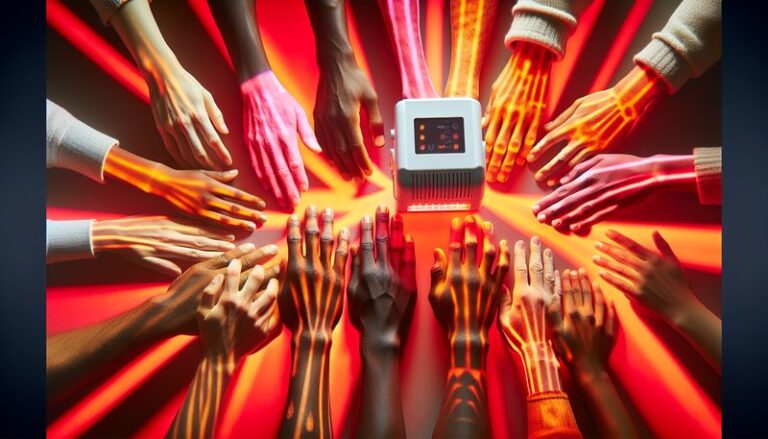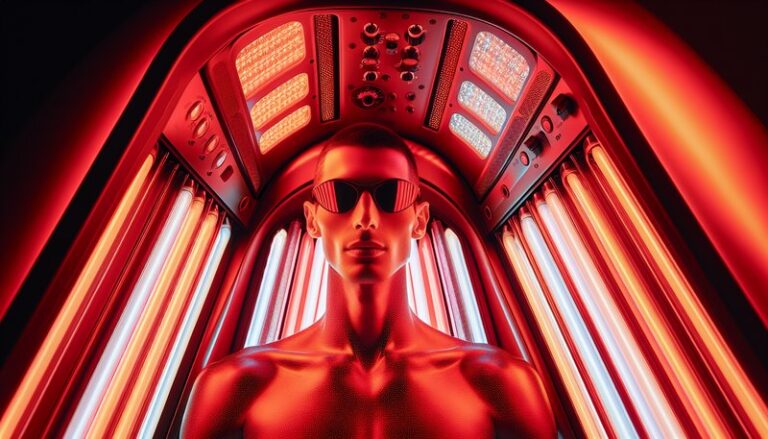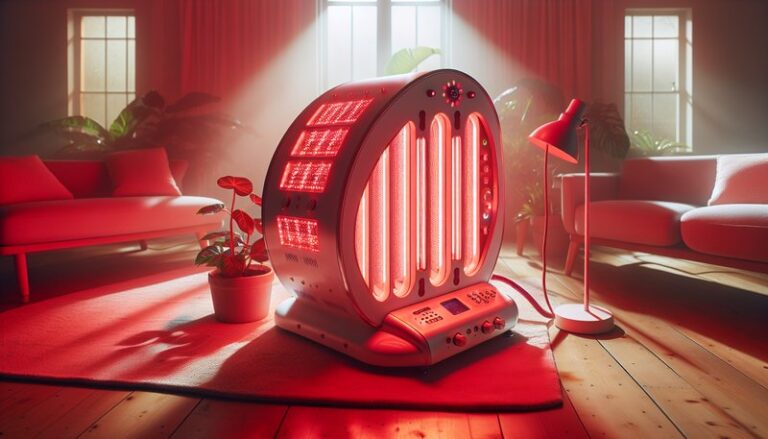Does Any Red Light Work For Red Light Therapy?
Does Any Red Light Work for Red Light Therapy?
Is every red light effective for red light therapy, or do specific types really matter?
In this article, we will explore the intricacies of red light therapy, addressing whether any red light will provide the desired therapeutic effects. We will delve into what makes red light therapy effective, its benefits, considerations before starting treatment, and alternatives available. By the end, readers will gain a comprehensive understanding of the topic and whether any red light can be used for therapeutic purposes.
Key Takeaways
- Not all red lights are suitable for achieving the therapeutic effects associated with red light therapy.
- Specific wavelengths and intensities are crucial for the effectiveness of the treatment.
- Understanding the technology behind red light therapy can help consumers make informed decisions.
What is Red Light Therapy?
Red light therapy (RLT) is a non-invasive treatment that utilizes specific wavelengths of red and near-infrared light to promote healing and recovery in various tissues. This therapy is based on the principle that light can penetrate the skin and stimulate biological processes within cells.
Studies have shown that red light therapy can aid in wound healing, reduce inflammation, and improve skin conditions. The typical wavelength used for therapeutic purposes ranges between 600 to 900 nanometers, with most effective results often observed at around 630 to 670 nanometers for red light and 810 to 850 nanometers for near-infrared.
RLT employs light-emitting diodes (LEDs) and certain laser systems to produce the required wavelengths, which has led to its popularity in various settings—from clinical environments to home-use devices.
What are the Benefits of Red Light Therapy?
Red light therapy offers numerous therapeutic benefits, which can be especially appealing for those seeking non-invasive treatments. Below are some key advantages associated with this therapy.
Enhanced Skin Health
RLT has demonstrated efficacy in improving skin tone and texture, reducing wrinkles, and promoting collagen production. Many skincare professionals are incorporating RLT into facials and rejuvenation treatments due to its ability to enhance overall skin appearance.
Pain Relief and Healing
Research indicates that red light therapy can assist in managing pain, especially for conditions like arthritis or muscle injuries. By increasing blood circulation, RLT encourages faster recovery times and may alleviate discomfort.
Improved Sleep and Mood
There is preliminary evidence suggesting that RLT can positively affect sleep quality and even reduce symptoms of depression. The therapy may help regulate melatonin production and balance mood by influencing light exposure on the body.
Additional Benefits
- Reduction of Inflammation: RLT can help decrease inflammation in tissues, which is crucial for recovery from a variety of ailments.
- Wound Healing: The therapy accelerates the healing process of cuts and other injuries by promoting cellular repair mechanisms.
Is it Possible to Use Any Red Light for Therapy?
While red light therapy requires specific wavelengths for effectiveness, it’s tempting to assume that any red light source could suffice. However, the reality is more nuanced. Conventional light bulbs or general red LED lights do not typically emit the specific wavelengths required for therapy that penetrate the skin effectively.
What are the Advantages of Using Specific Red Lights?
Using lights that are designed for RLT offers numerous advantages, such as:
- Targeted Wavelengths: Proper RLT devices emit specific wavelengths that penetrate the skin to promote desired biological effects.
- Standardized Dosage: Professional devices provide standardized dosages of light energy, which are essential for achieving therapeutic results.
- Scientific Backing: Devices designed for therapy are often tested for safety and efficacy, giving consumers confidence in their use.
What are the Disadvantages of Using Generic Red Lights?
While it might be economical to use any red light, there are notable disadvantages:
- Lack of Efficacy: Generic red lights may not produce the required wavelengths or intensity, resulting in minimal to no therapeutic effect.
- Potential Damage: Using lights not designed for therapy could potentially lead to skin damage or other adverse effects if used improperly.
What are the Things to Consider Before Using Red Light Therapy?
Before engaging in red light therapy, it’s essential to consider several factors to ensure safety and efficacy.
Read our full coverage Red Light Therapy for Vitiligo?
Understanding Wavelength Requirements
It is crucial to be aware of the specific wavelengths needed for effective therapy. Research and product specifications should guide your choices.
Device Quality and Specifications
Investing in reputable, well-reviewed devices is essential to ensure they meet therapeutic standards. Poor-quality lights can result in wasted time and money.
Duration and Frequency of Use
Determining how long and how often to use red light therapy is vital. Overuse can be counterproductive, and following insurance guidelines or manufacturer instructions is necessary.
Additional Considerations
- Consultation with a Professional: It’s advisable to discuss with a healthcare provider before starting therapy, especially for underlying health conditions.
- Skin Sensitivity: Individuals with sensitive skin may wish to proceed cautiously and observe any adverse reactions.
What are the Alternatives to Red Light Therapy?
If red light therapy doesn’t seem like the right fit, several alternatives can provide benefits for skin and overall health.
Blue Light Therapy
Blue light therapy is often used for treating acne and improving skin clarity. It targets bacteria responsible for breakouts and can help reduce the appearance of blemishes.
Topical Treatments
Creams and serums containing ingredients like retinoids, hyaluronic acid, or peptides can promote skin health and repair without the need for light application.
Cryotherapy
Cryotherapy involves exposing the body to extreme cold to reduce inflammation, alleviate pain, and improve skin tone. This method can provide different benefits compared to red light therapy but still promotes healing and rejuvenation.
See the full explanation Can You Use Red Light Therapy Daily?
Additional Alternatives
- Microdermabrasion: This exfoliation technique can help improve skin texture and address concerns like fine lines.
- Chemical Peels: Utilizing acids, chemical peels target skin rejuvenation and tackle various skin issues.
Conclusion: Is it Recommended to Use Any Red Light for Therapy?
In conclusion, while the idea of using any red light for therapy may seem convenient, it is crucial to understand that not all red light sources are effective for red light therapy. Specific wavelengths, intensities, and proper devices are necessary to achieve the therapeutic results associated with RLT. Investing in reputable devices designed specifically for red light therapy will yield better outcomes and ensure safety.
Frequently Asked Questions
Can I use my standard home lights for red light therapy?
No, standard home lights do not emit the specific wavelengths needed for effective red light therapy, which could compromise effectiveness.
How often should I use red light therapy for optimal benefits?
The frequency and duration depend on the device and intended use, but many recommendations suggest sessions lasting about 10 to 20 minutes, three to five times a week.
Are there any side effects associated with red light therapy?
Red light therapy is generally considered safe with minimal side effects, though some individuals may experience mild redness or irritations.
What should I look for when purchasing a red light therapy device?
Ensure the device specifies the wavelength range (typically 600-900 nm), has good user reviews, and meets safety certifications to guarantee therapeutic effectiveness.
Can anyone use red light therapy?
While it is safe for most individuals, those with specific skin conditions or health issues should consult a healthcare provider before starting treatment.






